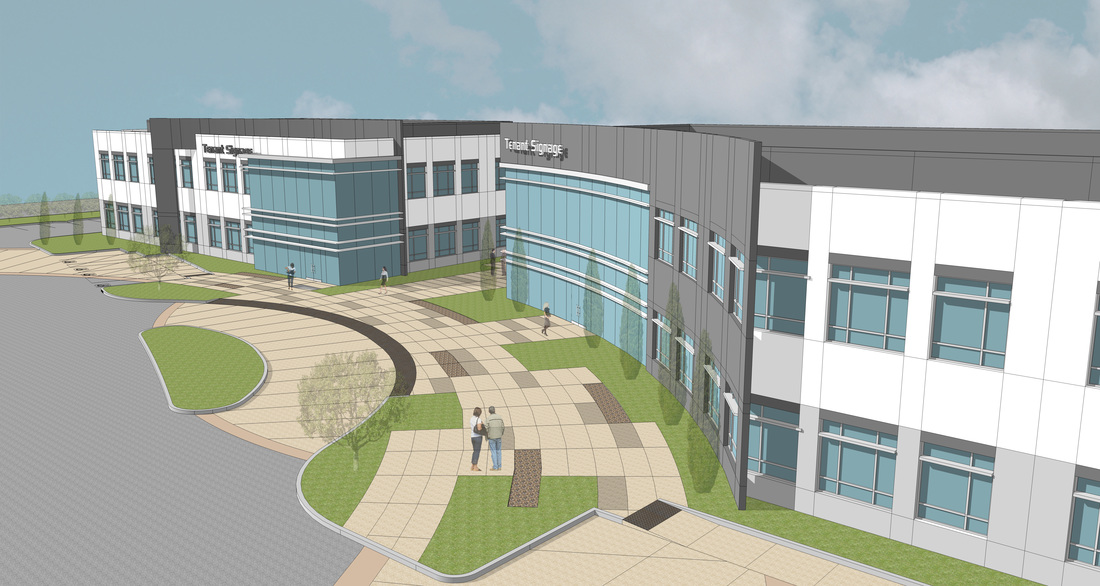Globest.com: Flexibility is Key on MOB Campuses

By Carrie Rossenfeld | Orange County, April 21, 2015
NEWPORT BEACH, CA—Newport Heights Medical Campus, which, as GlobeSt.com reported recently, will begin construction here this summer, will offer flexibility for large and small users for the long term, Real Estate Development Associates LLC’s co-founder and principal Jason Krotts and Cypress West Partners’ broker Bryan McKenney tell GlobeSt.com exclusively. REDA has partnered with the Bascom Group and Lake Forest, IL-based investment firm Westminster Capital LLC to acquire the land and develop the 64,000-square-foot campus, while Cypress West will handle pre-leasing and sales. We spoke with Krotts and McKenney about the new development, how changing healthcare practices are informing MOB design and what the future will bring in medical-campus development.
GlobeSt.com: What is the most interesting aspect of this campus, in your opinion?
Krotts: It’s a campus environment. You don’t have a lot of campus-type properties that could be used by one user with multiple product lines like imaging, surgery and dialysis all under the same brand. It has larger floor plates than most facilities, and its proximity to housing and to the large healthcare systems including Hoag, MemorialCare and Fountain Valley Regional, as well as St. Joe’s, CHOC and others is ideal. It’s a central point between all of these, and none is greater than 18 miles from this location. Finally, the local infrastructure is great, with the 55, 73 and 405 and all arterials in and out of coastal Orange County nearby. All of this combined makes it an intriguing project for us.
McKenney: The involvement with the physicians is what makes this project interesting from my perspective. One of my favorite things about this job is that we get to change the delivery of healthcare for 20-plus years: you, your kids and their kids will see it. Plus, the synergies between the groups in the campus, developing and shaping that entire model and being a part of these doctors’ practices—helping people help people—makes the job that much more interesting.
GlobeSt.com: Given how healthcare is changing, what are some newer design elements of today’s MOB campuses?
Krotts: Flexibility is one element that’s new. I’m not certain that it’s directly related to healthcare reform as much as it’s an evolution of the way people are being treated. This means larger floor plates, using more of the space in the building and creating a pod-type setting where up to 100% of the space is potentially utilized. By offsetting traditional office corridors, we can break up the space a little more effectively, and it all relates to the flow of patients, the level of service and how doctors and staff interact with patients today.
McKenney: Formerly, elevators and shafts were put in the center of the building to mitigate space between the elevator bank and the doors of the medical suites. Now, we have the elevators all at the front portion to give us the flexibility we need. In healthcare, we’ve seen the trends move from larger groups to smaller practices and now back to larger groups again, and we want to be able to adjust if a smaller group wants to expand. We will be able to accommodate individual practitioners and groups from 3,000 square feet to 10,000 square feet—we can handle both sides of that equation to fill the building up with the right mix of providers. We don’t want to end up with a long bowling alley with few or no window suites. We’ll have a corridor off to one side for single-practitioner offices and we can still do the large suites or pod-type suites.
GlobeSt.com: Can we expect to see more campuses of this type cropping up in the Orange County market?
Krotts: I think so. If you look at healthcare form a business standpoint, you have a lot more medical operator groups like Hoag and MemorialCare. Hospitals are meant for emergency care, and the way they grow and expand is to get all of these other services off campus. You will start to see more of this type of campus in certain high-demographic areas with a bigger business core, where patients can conveniently visit on their way to or from work or near their home.
McKenney: There’s also the Silver Tsunami as the large Baby Boomer population begins to reach a certain age point. The most expensive space in which to deliver that care is in the acute hospital setting. Care gets pushed out into the community now in a more campus-style environment. How much of this you’ll see depends, of course, on availability of land—how often do you get a four-acre piece of dirt that you get to develop from scratch? But this type of development is driving the future of healthcare real estate.